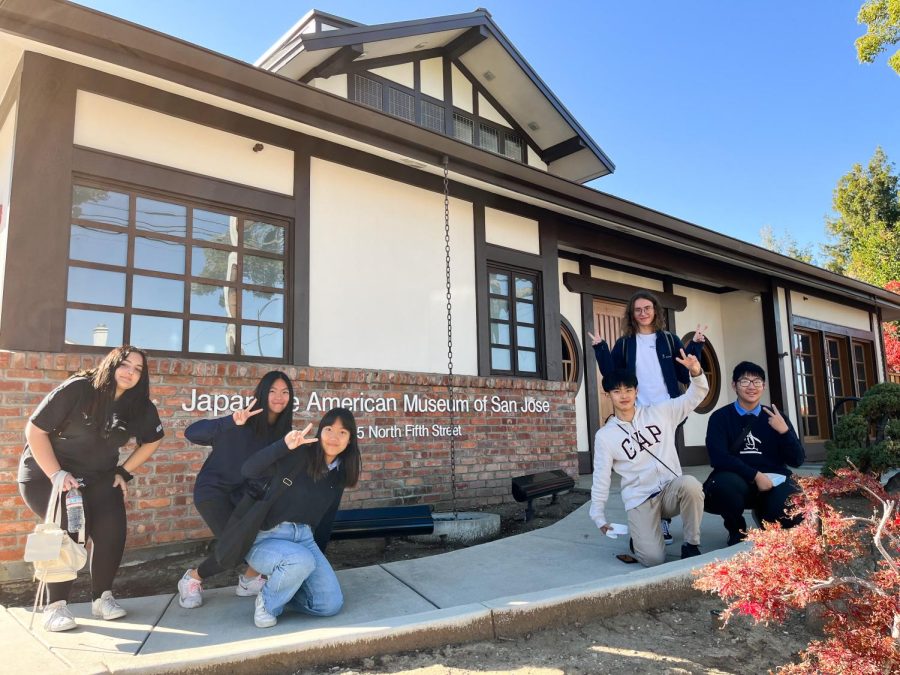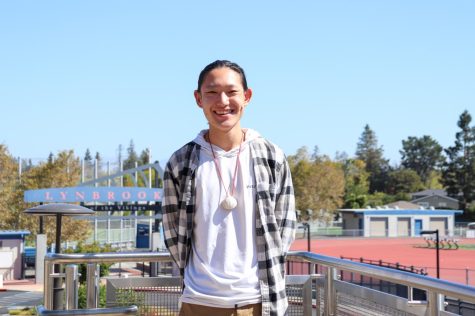ELD students visit Japanese American Museum for WWII history
Used with permission from Terri Fill
After reading the World War II accounts in Wakatsuki’s memoir, Students visited JAMsj to learn more about Japanese American history.
December 12, 2022
After reading Jeanne Wakatsuki’s memoir, “Farewell to Manzanar,” English Language Development students from the American Literature and Writing Sheltered class further explored the historical accounts of World War II concentration camps by visiting the Japanese American Museum in San Jose.
“Farewell to Manzanar” details Wakatsuki’s experiences at the Manzanar Relocation Center. Through crowded living spaces, riots and poor sanitary conditions, the autobiography offers a glimpse into the lives of those affected by Japanese internment. Terri Fill, the American Literature and Writing Sheltered teacher, was inspired to integrate the book into the curriculum after attending a statewide teaching conference.
“I wanted to teach ‘Farewell to Manzanar’ because it connects to California’s history and educates our student body about the United States’ history of discrimination against Asian Americans,” Fill said. “This dark spot in our nation’s history is best told from the people who experienced it.”
Students engaged in class discussions and read dialogue aloud to examine Wakatsuki’s recount. Fill also incorporated supplemental readings to provide broader historical context, including President Roosevelt’s Executive Order 9066 which led to the incarceration of Japanese Americans and President Bush’s letter of apology and reparations.
“The most memorable section was the ending, when Wakatsuki revists Manzanar as an adult,” junior Richard Lim said. “Although she was very young when she was incarcerated, you can just see the impact Manzanar had on her. Wakatsuki recalls every detail, even the smell of the camp and the voices of the other detainees.”
After finishing the book, the class took a field trip to JAMsj on Nov. 15. JAMsj was established in 1987 as a showcase of Santa Clara Japanese American farmers, but now preserves artifacts of Japanese immigrants and keeps records of Japanese American lives from World War II. It is located in San Jose’s Japantown, one of the last three remaining Japantowns in America.
“The purpose of the museum is to collect, preserve and share the history and stories of Japanese Americans,” said Lynda Gomi, tour guide and member of the Board of Directors of the Japanese American Museum. “These stories need to be told not just by people of Japanese ancestry, but by America in general, because it is our nation’s story too. If we don’t know our own story, we can’t challenge past beliefs and push for change.”
Students viewed various artifacts and sections of the museum, such as sections about Japanese American business owners, activists that were mentioned in “Farewell to Manzanar” and the 442nd Infantry Regiment composed of Japanese American soldiers in World War II.
“My favorite part of the tour was visiting the model of the barracks where the Tule Lake Relocation Center internees lived,” junior Zihan Gong said. “It’s as if you could feel the spirit of the hardships they endured.”
Through their field trip, students discovered diverse art borne from a time of tense racial dynamics. Diving deeper into the world of “Farewell to Manzanar,” students observed how Wakatsuki’s experiences were reflected in the lives of countless other Japanese Americans.
“There are a couple of key lessons I want my students to take away from this,” Fill said. “One is that we need to learn from the past and prevent history from repeating itself. The second is to appreciate the power of telling your story. The last is to learn about activism, so that when they encounter injustice, they will stand up against it.”




























































